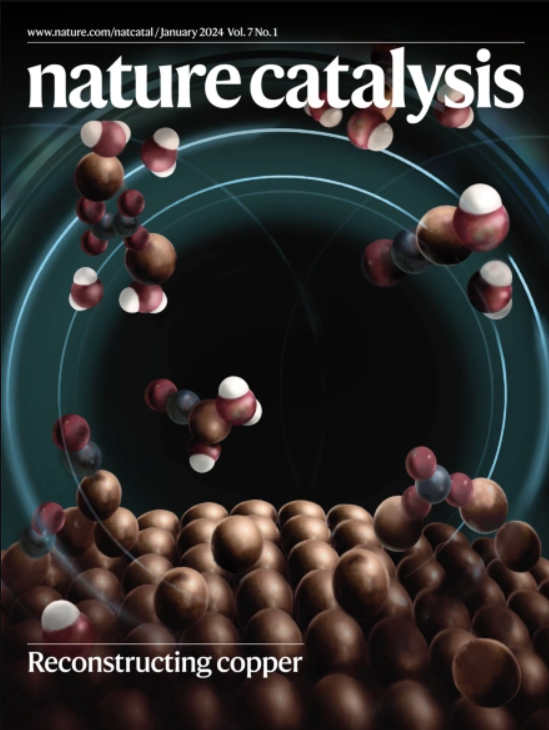Rings for interfacial catalysis
IF 44.6
1区 化学
Q1 CHEMISTRY, PHYSICAL
引用次数: 0

用于界面催化的环
现在,王宜林、刘兵和同事们开发了一种乳液,其中的液滴被一层密集堆积的胶体SiO2环单层覆盖(如图)。除了提高稳定性外,SiO2环是空心的,因此液滴的液-液界面很大程度上保持可接近性,从而使催化剂能够有效地扩散和运行。首先,利用荧光罗丹明B观察了环己烷水环稳定皮克灵乳(RPE)与常规纳米球稳定皮克灵乳(SPE)在界面上的扩散增强。有了这个有益的特征,研究人员开始用它来增强催化反应。将脂肪酶加入到甲苯水溶液RPE的水相中。酶在界面处积累,催化油溶性4-硝基苯基棕榈酸酯水解为水溶性对硝基酚,并迅速扩散到水相。该装置在反应转化率和脂肪酶比活性方面优于其他常规乳液体系。然后,作者将RPE应用于血红蛋白催化的邻苯三酚氧化,该氧化不仅发生在界面上,而且发生在水相中。与其他PE体系相比,RPE再次表现出明显更快的转化,这是由于产物从水相到有机相的扩散速度更快。最后,制备了负载Pd NPs的RPE,结果表明,由于界面处Pd NPs的积累较多,该RPE在间歇氧化甲醇和连续流界面催化方面的性能优于相应的SPE体系。总之,研究人员已经成功地解决了颗粒稳定皮克林乳液界面可及性低的问题,并令人信服地证明了所开发的环稳定体系在催化应用中的优势。
本文章由计算机程序翻译,如有差异,请以英文原文为准。
求助全文
约1分钟内获得全文
求助全文
来源期刊

Nature Catalysis
Chemical Engineering-Bioengineering
CiteScore
52.10
自引率
1.10%
发文量
140
期刊介绍:
Nature Catalysis serves as a platform for researchers across chemistry and related fields, focusing on homogeneous catalysis, heterogeneous catalysis, and biocatalysts, encompassing both fundamental and applied studies. With a particular emphasis on advancing sustainable industries and processes, the journal provides comprehensive coverage of catalysis research, appealing to scientists, engineers, and researchers in academia and industry.
Maintaining the high standards of the Nature brand, Nature Catalysis boasts a dedicated team of professional editors, rigorous peer-review processes, and swift publication times, ensuring editorial independence and quality. The journal publishes work spanning heterogeneous catalysis, homogeneous catalysis, and biocatalysis, covering areas such as catalytic synthesis, mechanisms, characterization, computational studies, nanoparticle catalysis, electrocatalysis, photocatalysis, environmental catalysis, asymmetric catalysis, and various forms of organocatalysis.
 求助内容:
求助内容: 应助结果提醒方式:
应助结果提醒方式:


